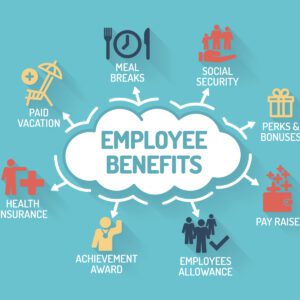Keeping Talent Is Key To SuccessFor many years, dealership fixed operations departments have fought to attract and retain qualified talent. I don’t have to tell you that you can’t just place an order at the “technician factory” for example and ‘POOF!’ get a shop full of A-level master technicians.
The struggle is real, and it’s certainly a matter of both finding appropriate candidates to begin with and retaining them long term that keeps fixed-ops managers on their toes.
“Career paths” benefit fixed operations managers with this by providing readymade talent and using that talent to attract other top performers in the industry. A career path is a clearly described process within an organization that allows employees to advance their careers to higher levels of salary, responsibility and/or authority. Once employees meet certain conditions, they are eligible to move into higher level positions.
Employee / Employer Benefits
Career paths contribute to staff retention which is a huge plus for both employer and employee. When employees experience rough periods in their job, they can look at the career path to see where there is more money, responsibility, or authority available in the near future. Of course, provided they have the requirements for moving to the next tread of the career path.
Travis Ostrom, founder of The TKO Group which runs eight dealerships, frames it this way: “Any prospective candidate who is looking for a career opportunity would like to see what the potential is for advancement. We thought it was very important to lay out the path for progress with our company and include salary ranges for each position. This way anyone who is currently employed or will become employed will be able to reference this guide to determine if we are a good fit and be able to increase their responsibilities as well as earnings.”
In this way, employees can see the light at the end of the tunnel. It causes them to think long and hard about the pros and cons of taking a different job. If they decide to leave, they must brush up their resumes, complete job applications, go on interviews, learn a new job and assimilate into a new organizational culture. If they decide to stay, they know the job and organization, are also in line for career advancement and know exactly what they need to do to achieve the next step in their careers.
Hiring For Progression
Just like a sports team coach, you are the person in charge of the activities, tactics, and training so your team can excel. We all know turnover occurs, whether it be from employee advancement, natural attrition, sickness, injury or other reasons. Like a coach, the ideal situation is having a farm team of players to insert in the right place at the right time.
During the hiring process, carefully consider if your candidate would be an ideal applicant to advance to the next level. We all have personnel that stays in one job forever, but the ideal situation, particularly when hiring entry-level employees, is to hire for advancement to the next position eventually.
Here are some of the other ways career paths benefit employing organizations.
Well-trained Workforce
Face it, there is a lot of time, knowledge and expertise needed to operate the systems and procedures of your organization, in addition to the actual job function of an individual employee. An existing employee has accumulated, in many cases, years of experience with you, your staff, and the facility. Also, career paths provide external stimulus for employees to attend job-related training and care about other jobs around them.
Demonstrates Appreciation For The Staff


The organization equips employees to do their jobs better over time. Career paths facilitate this in methodical ways. Each step of the path has training requirements for moving to the next stage. The training prepares employees for the tasks, assignments, and projects to work on once they reach the next level of the career path.
A “Driven” Labor Force
Job performance is always a crucial aspect in career path programs and employees are incentivized toward good performance. Not only do employees have to gain practice and complete training, but they also must perform well in their current roles. It would make no sense for an organization to promote an employee up to a career path if the employee has not proven competent at lower levels. By requiring employees to perform acceptably to promote, dealerships hopefully create motivation in the workforce.
Smart dealerships promote their career paths when attracting job applicants in the hopes of getting new hires who are fine with starting at the lowest step when they know there is a clear path to a higher level. These are people who flourish in career path situations. They want to advance themselves to move up the path.
The Right “Seat on the Bus”
Career paths are tools managers can use when they make decisions about which employees are assigned which responsibilities. Obviously, employees higher up the career path can be given more intricate and difficult jobs and functions than employees at lower levels. Employees at higher levels have the knowledge, skills, abilities, and salaries that coincide with those positions.
Managers can use projects to help people at lower levels grow into higher level employees. As an employee gets close to reaching the highest career path step, a manager can assign that employee a project or task like those that employees will receive at higher levels. This shows the manager how that employee would cope in a similar situation on a consistent basis.


Higher level employees can be used as mentors for lower level employees. The lower level employees can gain insight on how to climb the path themselves. Of course, dealerships must ensure their chosen mentors have the skills and the attitude suitable for mentoring. Make sure you have a good match between coach and student.
These are all things to consider for how you dealership organization could benefit from a formal career path to enhance the manageability of operations, retain long-lasting tenured employees and attract the right human capital to your team.








